Burns and scalds
Burns reference card
[2020]
Download Burns reference card
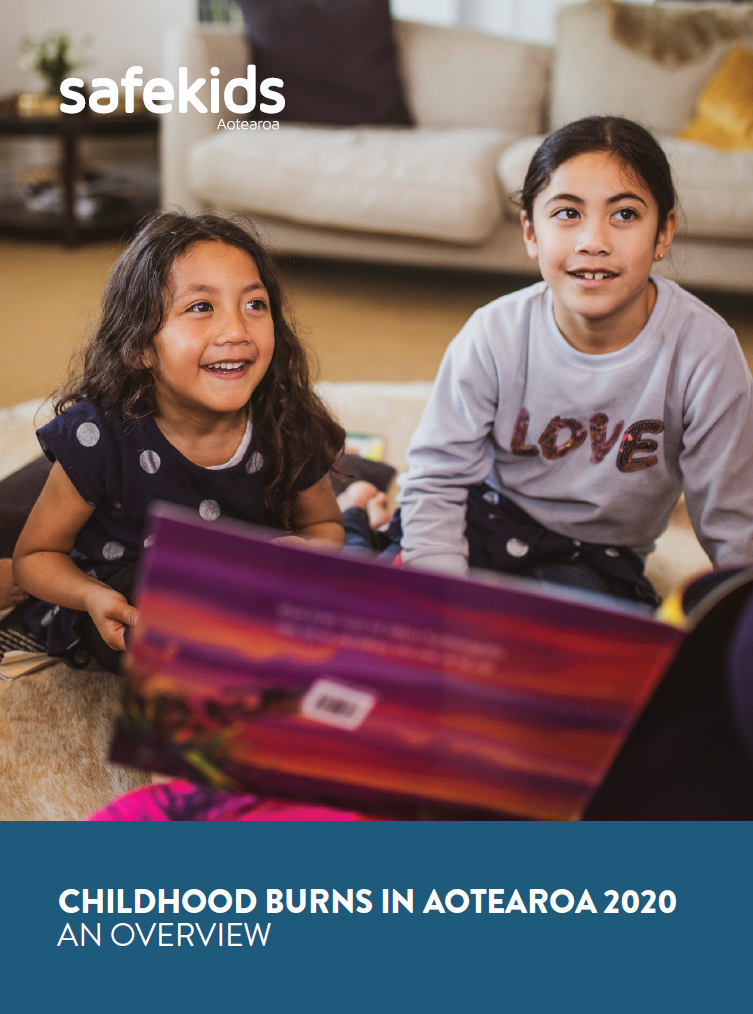
Childhood Burns in Aotearoa: An Overview
[2020]
This report analyses the mortality data from 2007-2016 and hospitalisation data from 2009-2018 to present the risk of injury from burns and scalds. It compares hospitalisation rates between different factors such as age, ethnicity, location of injury, etc. The leading cause of burns for children was contact with hot drinks, food, fats and cooking oil. This report also contains tips on how to prevent burn injuries to tamariki in various settings.
Download Childhood Burns in Aotearoa 2020 >>
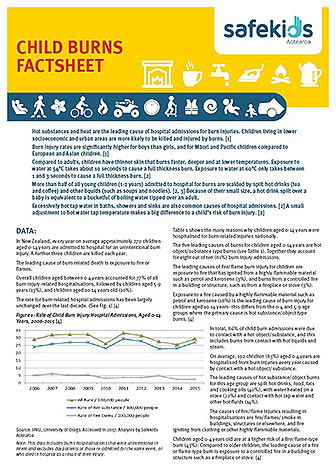
Child burns factsheet
[2017]
An A4, 6 page factsheet with data and information on causes of unintentional child burn hospitalisations in NZ.
It also contains a section on gender and ethnicity, messaging and good practice interventions.
Download Safekids Burns Factsheet>>
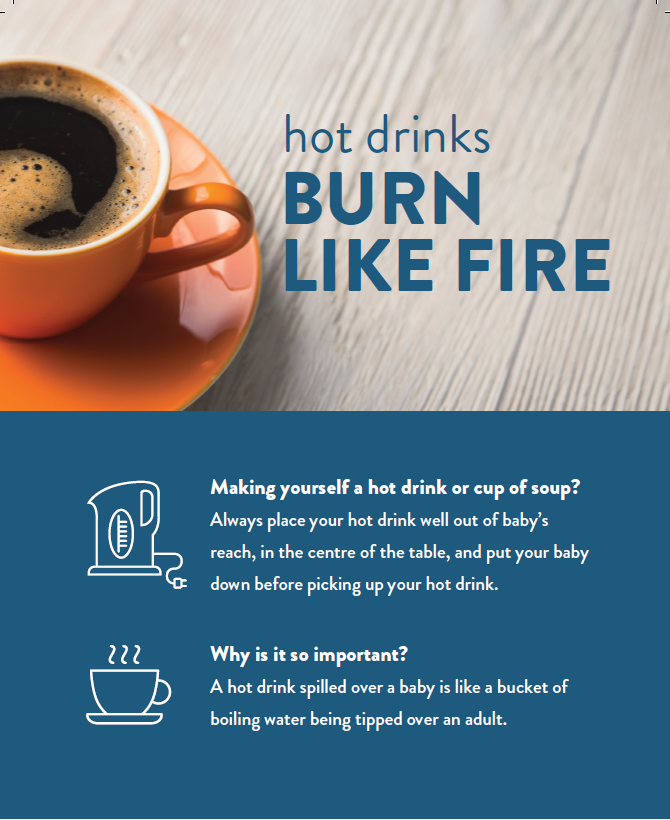
Hot drinks burn like fire
[Pamphlet, 2015]
Hot drink burns are preventable.
Hot drinks are the number one cause of burn injuries and hospitalisations among children under five.
This informative A5 pamphlet provides a list of the dangers posed by hot drinks, as well as tips on what to do if your child gets burned.
Download PDF Hot Drinks Burn Like Fire>>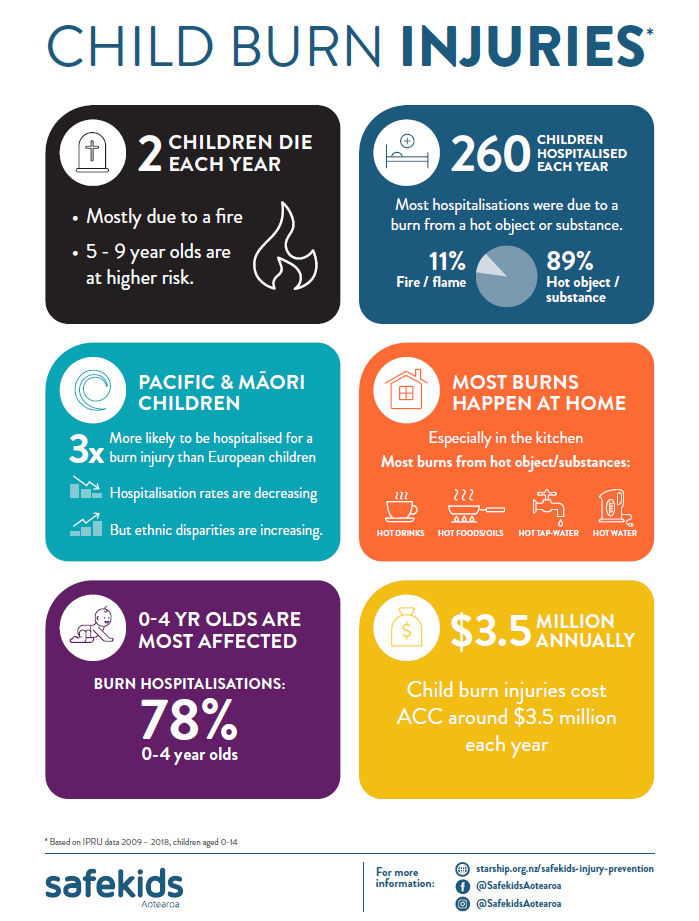
Child Burn Injuries
[Pamphlet, 2020]
This pamphlet provides information & statistics on injuries caused by burns in New Zealand.
Download Child Burn Injuries Pamphlet >>
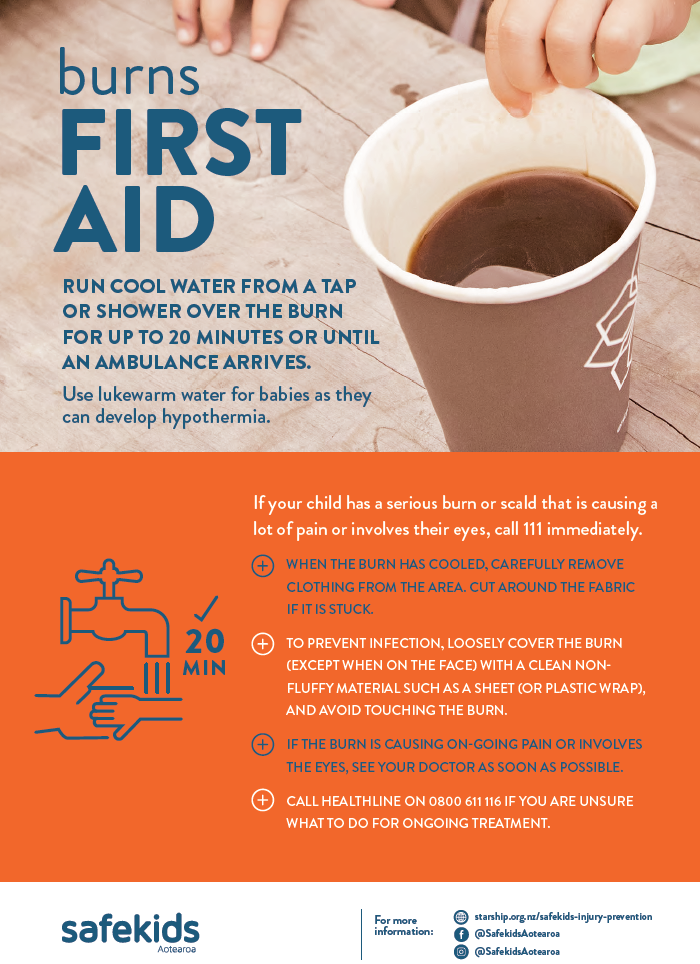
Burns First Aid
[Pamphlet, 2020]
This informative pamphlet contains tips on what to do if your child suffers a serious burn or scald.
Download Burns First Aid Pamphlet >>
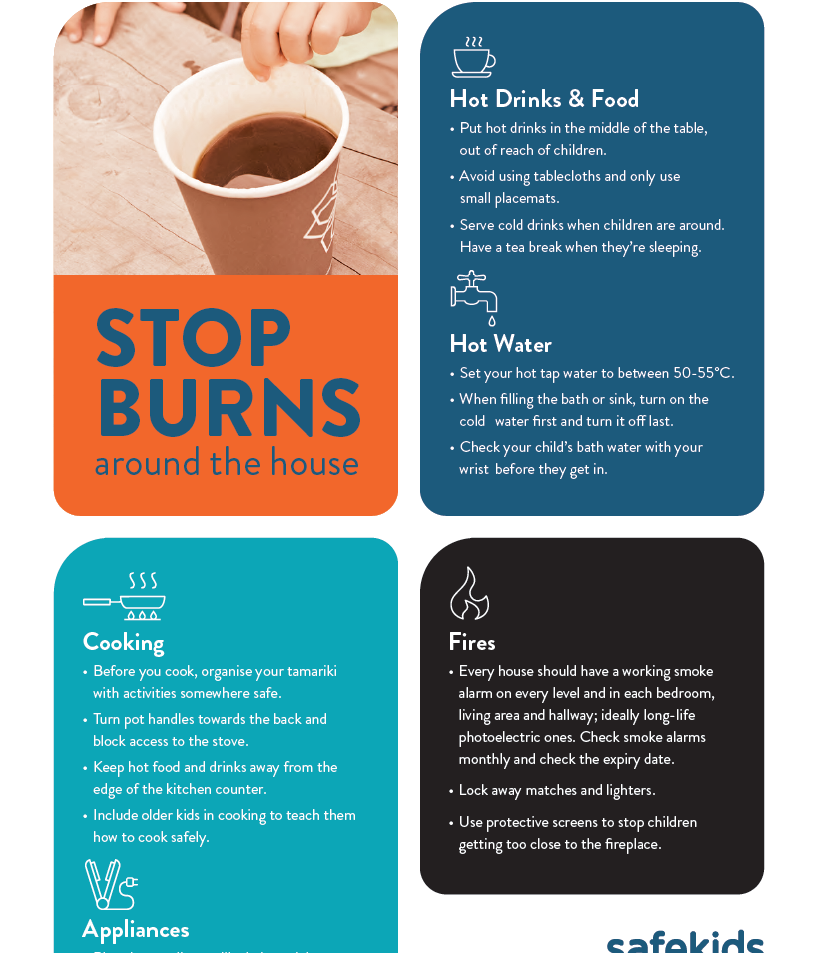
Stop Burns around the House
[Infographic, 2020]
This infographic contains tips on how to reduce the risk of burns around the house from hot drinks & food, hot water, cooking, appliances and fires.
Download Stop Burns around the House infographic >>
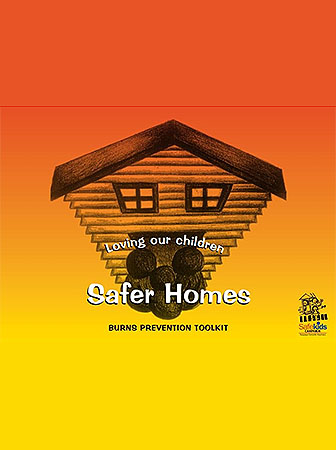
Loving our children : safer homes
[Flip chart, 2009]
Loving our children: safer homes: keeping our children safe from burns and scalds. This A5-sized spiral bound booklet is a child burn prevention resource from Safe Waitakere. It includes general facts about child burns, safety messages around common causes of burns (such as overly hot tap water, hot drinks and food, kettles, irons, barbeques, heaters, open fires, house fires etc) and black and white illustrations of these causes and preventive measures. The booklet could be used during a one to one discussion with parents and caregivers. The audience is home visitors such as WellChild visitors, midwives etc.
Download PDF Safekids Safer Homes Flipchart>>

